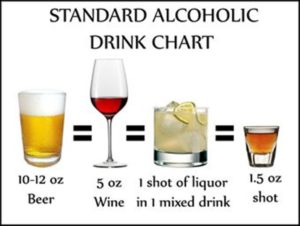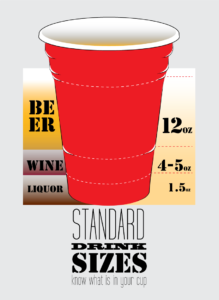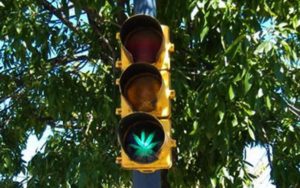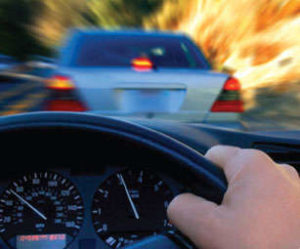If You Feel Different You Drive Different
Getting a driver’s license opens a world of possibilities for teens. This right of passage brings with it a feeling of freedom and independence, and in some cases invincibility. It is important to help teens to remember that the privilege of driving also comes with important responsibilities for themselves, their passengers and others on the road.
While as parents we hope our children will wait until they are of legal age to consume alcohol and will stay away from marijuana and other drugs, statistics tells us that high schoolers may experiment or may be around others who are experimenting. Teen drivers must be aware of how alcohol consumption, as well as marijuana and other drug use, can impact their ability to drive.
New York, like all states, has a Zero Tolerance law for people under the age of 21. But more significant than the legal consequences are the dangers of driving after consuming alcohol or getting in a car with someone who has been drinking.
Driving Under the Influence of Alcohol
In all 50 United States, it is illegal for any person under the age of twenty-one to drive after consuming any alcohol. Why is a Zero Tolerance Law important? Alcohol consumption impairs a person’s ability to drive a vehicle and new drivers may be more vulnerable to these impairments and less likely to recognize them.
How does alcohol impair a person’s ability to drive?
Alcohol is a depressant drug – consumption of alcohol can slow down the central nervous system, including the brain. It doesn’t take long for alcohol to enter the brain once drinking has begun. The first part of the brain likely to be affected by alcohol consumption is the cerebrum, the part of the brain that controls thinking, judgment and decision making. When the effect of the alcohol reaches the cerebrum, the brain is less able to process information and engage in sensible decision making. This is why many people think of drinking alcohol as a way to lower inhibitions. Alcohol influence in the cerebrum not only causes people to make riskier decisions, it also slows down the processing of information from your senses including your eyes and ears. The combination of impaired thinking and information processing can be particularly lethal when an intoxicated person gets behind the wheel of a car.
Another part of the brain that is impacted by alcohol consumption is the cerebellum. The cerebellum works with the primary motor cortex to control movement, balance, and complex motor functions. Once alcohol reaches the cerebellum, the body’s reflex reaction becomes slowed, making the person less able to respond quickly. The body’s ability to balance, as well as hand-eye coordination, and stability are also negatively impacted.
Driving under the influence of alcohol is dangerous, particularly for new teen drivers.
Thinking about the effects of alcohol on the brain and the many demands on the brain when driving a car, it is pretty easy to understand why driving under the influence of alcohol is so dangerous. With impaired judgment and reactions time, drivers may not react quickly enough or in an appropriate way to road conditions, hazards, pedestrians, other traffic and any of the myriad of situations we encounter every time we drive a car. With impaired motor function, drivers may not see the road or the conditions clearly and may have a hard time controlling the car including keeping it in its lane or even on the correct side of the road.
Further reading about alcohol, the brain and driving:
http://sciencenetlinks.com/student-teacher-sheets/alcohol-and-your-brain/
Know What’s In Your Cup


Blood Alcohol Content
While all parents should talk to teens about not using alcohol, it is equally important that parents help their teens understand the impact of alcohol they or their friends may consume so that do not drive while impaired or get in the car of someone who has been drinking.
Factors Influencing BAC:
If you’ve been drinking, your BAC and your level of impairment depend on five factors:
- the amount of alcohol you drink;
- the amount of food you eat before or while you drink alcohol;
- the length of time you drink alcohol;
- your body weight;
- your gender.
Not all alcoholic drinks are equivalent – the “standard drink”
It’s important to remember that not all alcoholic drinks are equivalent when it comes to the amount of alcohol they contain. Many people are surprised to learn what counts as a “standard drink”. The amount of liquid in your glass, can, or bottle does not necessarily match up to how much alcohol is actually in your drink. Different types of beer, wine, or liquor can have very different amounts of alcohol content. That’s why it’s important to know how much alcohol your drink contains. In the United States, one “standard” drink contains roughly 14 grams of pure alcohol, which is found in:
- 12 ounces of regular beer, which is usually about 5% alcohol;
- 5 ounces of wine, which is typically about 12% alcohol;
- 1.5 ounces of distilled spirits, which is about 40% alcohol.
There is no quick fix to become sober.
Cold showers, coffee and other popular methods of “sobering up” have no impact on BAC. The only thing that affects sobriety is time – time for your body to metabolize the alcohol which will lower your BAC. Unlike alcohol absorption rates which are impacted by stomach contents, weight and gender, all people metabolize alcohol at the same rate. The body eliminates alcohol in the body at a fairly constant rate of about .015 of BAC per hour, which is generally thought of as about one standard drink per hour.
More Information:
https://www.niaaa.nih.gov/alcohol-health/overview-alcohol-consumption/what-standard-drink)
https://www.alcoholproblemsandsolutions.org/how-can-i-sober-up-fast/
Driving Under the Influence – New York State Laws
New York State has a variety of laws relating to driving a car while under the influence of alcohol or other drugs. These include driving while your ability is impaired by alcohol, driving while your ability is impaired by a drug other than alcohol, driving while your ability is impaired by both alcohol and other drugs, aggravated DWI and chemical test refusal.
Easiest to determine and enforce is driving while under the influence of alcohol where the state uses your blood alcohol concentration, or BAC, to determine whether you’re legally driving while intoxicated. If you are under 21, you will be charged with DWI if your BAC is 0.02%.
More Information About New York Laws:
https://dmv.ny.gov/about-dmv/chapter-9-alcohol-and-other-drugs
https://dmv.ny.gov/tickets/penalties-alcohol-or-drug-related-violations
Driving Under the Influence of Marijuana
Because driving is such a common activity, it’s easy to forget how you must stay alert to stay safe. While driving maneuvers like accelerating or changing lanes may feel automatic, your brain is actually in high gear.
How does marijuana impair a person’s ability to drive?
Marijuana, like alcohol and other drugs, interferes with the brain’s ability to function properly. Tetrahydrocannabinol (THC), which is the main active ingredient in marijuana, affects areas of the brain that control your body’s movements, balance, coordination, memory, and judgment. This in turn negatively affects a number of skills required for safe driving:
- Marijuana can slow your reaction time and ability to make decisions;
- Marijuana use can impair coordination;
- Marijuana use can distort perception;
- Marijuana use can lead to memory loss and difficulty in problem-solving.
The effect of marijuana on the brain can vary and be unpredictable.
There is another important thing to consider about driving while under the influence of marijuana. Unlike alcohol where you can fairly accurately predict your level of intoxication based upon your body weight, the number of drinks you have had and the time that has elapsed, there is no linear dose-response curve for marijuana. Marijuana differs from alcohol in this way, where psychomotor skills, awareness and reactivity are affected in various and unpredictable ways. A big variable is the THC content which can range from very little to up to amounts as high as 30 per cent. Additionally, how much THC you get varies too depending on how you smoke – how deeply you inhale and how long you hold it in. Given these factors, the only way to ensure you are driving safely is not to drive after using any marijuana.
Finally, when marijuana use is combined with drinking, the risk of impaired driving appears to be greater than that for either by itself. This is a factor all teens should be aware of.
Further reading about marijuana and driving:
https://www.cdc.gov/marijuana/pdf/marijuana-driving-508.pdf
https://www.leafscience.com/2017/12/13/marijuana-driving-know/


